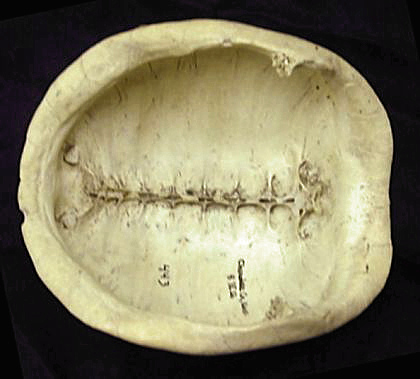

Many of us have seen TV cartoons where a turtle crawls out of its shell, as if the shell were a doghouse--or perhaps more accurately, a turtlehouse. People who know a little biology wince in sympathy at the sight. After all, the poor turtle's ribs and backbone are part of the shell--removal is both painful and fatal. Cartoons not withstanding, being permanently stuck inside the shell has done remarkably well for turtles. Spread throughout the tropic and temperate zones of the earth, they've changed little over more than 200 million years. Only now are numerous species in danger, sold for food and the pet trade.
Although commercial use has increased greatly in recent years, turtles
have long played important roles in human culture. In our Chihuahuan Desert, some
undoubtedly were eaten; others ended up as turtle-shell rattles. Strapped to ankles
during dances or attached to wands, rattles were widely used in various ceremonies.
It's just unfortunate that the turtles couldn't have done the cartoon thing,
and just abandoned their shells to the rattle makers.

![]()
Contributor: Arthur H. Harris, Laboratory for Environmental Biology, Centennial Museum, University of Texas at El Paso.
Desert Diary is a joint production of the Centennial Museum and KTEP National Public Radio at the University of Texas at El Paso.

Looking at the underside of a turtle shell, the vertebrae making up the backbone are clearly visible; much of the roof of the shell consists of expanded ribs. LEB specimen, photograph by A.H. Harris.